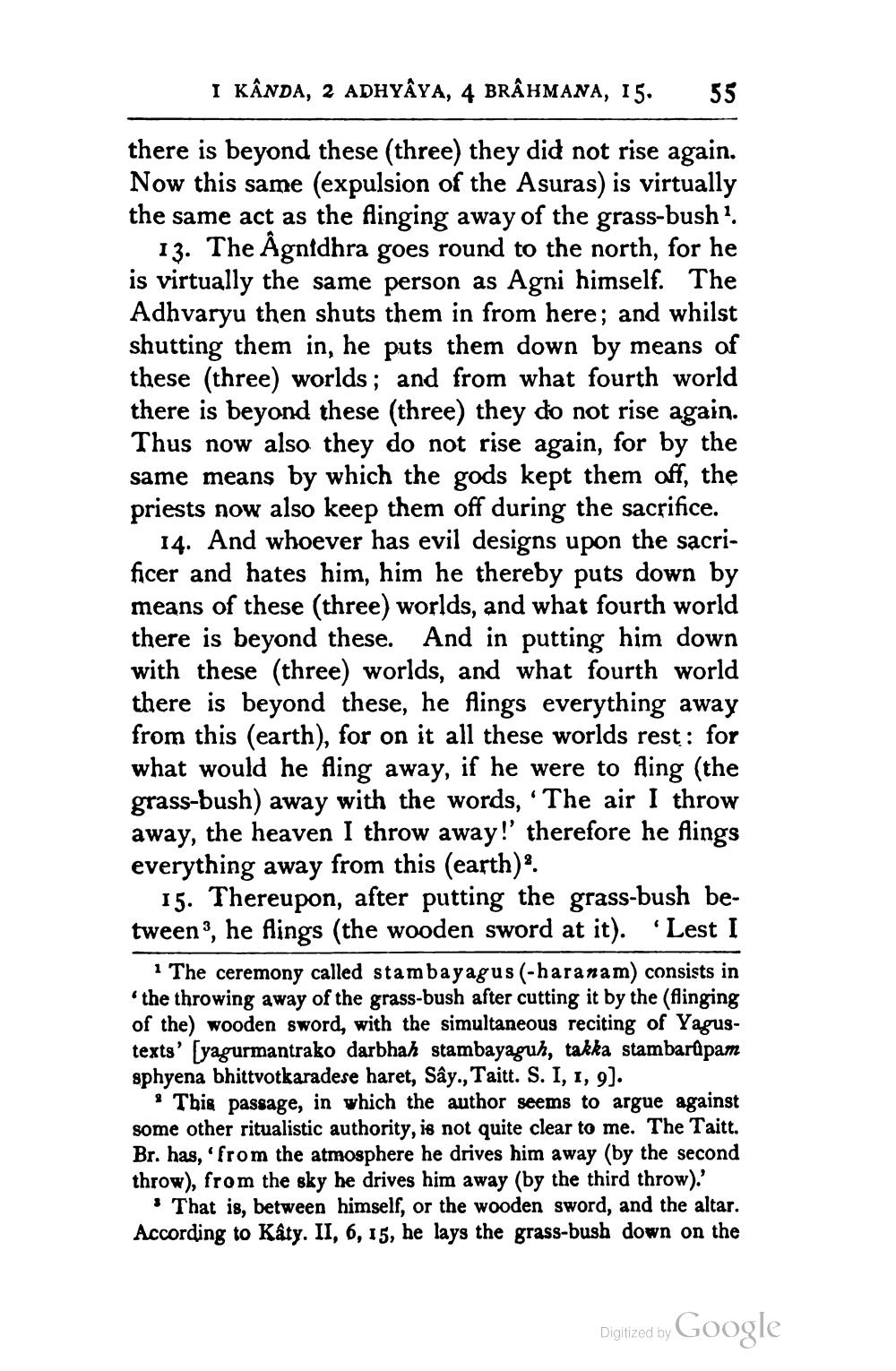________________
I KÂNDA, 2 ADHYAYA, 4 BRAHMANA, 15.
55
there is beyond these (three) they did not rise again. Now this same (expulsion of the Asuras) is virtually the same act as the finging away of the grass-bush?.
13. The Agnidhra goes round to the north, for he is virtually the same person as Agni himself. The Adhvaryu then shuts them in from here; and whilst shutting them in, he puts them down by means of these (three) worlds; and from what fourth world there is beyond these (three) they do not rise again. Thus now also they do not rise again, for by the same means by which the gods kept them off, the priests now also keep them off during the sacrifice.
14. And whoever has evil designs upon the sacrificer and hates him, him he thereby puts down by means of these (three) worlds, and what fourth world there is beyond these. And in putting him down with these three) worlds, and what fourth world there is beyond these, he Alings everything away from this (earth), for on it all these worlds rest: for what would he fing away, if he were to Aling (the grass-bush) away with the words, “The air I throw away, the heaven I throw away!' therefore he Aings everything away from this (earth).
15. Thereupon, after putting the grass-bush between”, he fings (the wooden sword at it). •Lest I
1 The ceremony called stambayagus (-haranam) consists in the throwing away of the grass-bush after cutting it by the (flinging of the) wooden sword, with the simultaneous reciting of Yagustexts' syagurmantrako darbhah stambayaguh, takka stambargpam sphyena bhittvotkaradese haret, Sây., Taitt. S. I, 1, 9).
* This passage, in which the author seems to argue against some other ritualistic authority, is not quite clear to me. The Taitt. Br. has, from the atmosphere he drives him away (by the second throw), from the sky he drives him away (by the third throw).'
That is, between himself, or the wooden sword, and the altar. According to Kâty. II, 6, 15, he lays the grass-bush down on the
Digitized by Google




